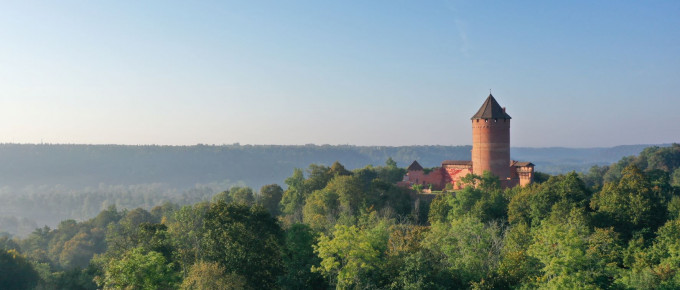In order to promote the Liv roots and the Liv heritage in the Latvian language, in cultural space and landscape of Latvia, the Liv Institute of the University of Latvia in cooperation with the Latvian National Commission for UNESCO and the Latvian National Centre for Culture declares 2023 as the Year of the Liv Heritage.
Latvia is the homeland of the Latvians belonging to the nation-state and the autochthonous population Livs, or Livonians. The Livs once inhabited regions in Northern Courland, Northern part of Semigallia and Vidzeme - around the Daugava, Gauja and Salaca Rivers, where their presence in the 12th/13th centuries is evidenced by written sources, first of all by the Chronicle of Henry of Livonia, while archaeological finds give evidence that the Livs have inhabited the Daugava and Gauja River basins since the 9th/10th centuries. It is traditionally assumed that the Livs have arrived in this area from Courland. Traces of Finno-Ugrian peoples, to which the Livs belong, can be found in the territory of Latvia already in the Stone Age, while we can speak about the Balts and Finno-Ugrians as clearly distinguishable ethnic units since the 2nd century BC.
Livs and Latvians share a common history – they were simultaneously involved in Western-Christian civilization, were part of medieval Livonia, experienced the Reformation, the Livonian War and the subsequent collapse of Livonia. Both peoples experienced periods of Polish, Swedish and Russian rule, National Awakening in the 19th century, the 1st period of the Free State of Latvia, period of Soviet and National Socialist German occupation. While Latvians managed to survive as a people and consolidate into a nation, the number of Livs was dramatically reduced by the wars and the subsequent epidemics, deportations and repressions.
Although the Livs have survived as a people with their own language and culture, they have contributed to the creation of the Latvian nation, along with the Curonians, Semigallians, Selonians and Latgalians, who belong to the Baltic family of languages.
The Livs have left their traces in the regions of modern-day Latvia - these are place names, antiquities, language peculiarities - the Liv dialect in Vidzeme, especially in Ainaži, Limbaži, Skulte, Salaca regions.
Turaida is one of the ancient Liv lands – the Livs who inhabited both banks of the Gauja River, in the 13th century, were called the Gauja or Turaida Livs.
The Turaida Livs played an important role in the Christianization of the Baltics. In the beginning of the 13th century, “the Great Castle” of Kaupo, the most influential Liv elder (called "as if king") was located there. Kaupo was the first representative of the ancient Baltic peoples, who visited Rome, in 1203, and met Pope Innocent III.
Being aware of its mission to preserve the heritage of Livs, the Turaida Museum Reserve will actively participate in the events of the Liv Year - regularly informing the public on issues of Liv history, organizing thematic activities and performing archaeological excavations at one of the monuments of the Gauja Livs. It should be noted that the Latvian Association of Archaeologists has declared the cult site - the Liv sacrifice cave near Svētupe (Sacred River) - an Archaeological Monument 2023.
On 26 March, the first Sunday after the spring solstice, when the Livs celebrate the beginning of the new year, a flashmob – waking up of the birds will take place. Traditionally the overwintering birds have been awakened with the song "Tšītšōrlinkizt". A water bird plays a special role in the mythology of the Livs, and other Finno-Ugrian peoples. In the context of the Liv Year, this event will take place in all regions of Latvia where the Livs once lived.
The events will focus on the 820th anniversary of Kaupo's visit to Rome, celebrate the 110th birthday of the outstanding archaeologist, researcher of the ancient history of the Turaida Castle and Gauja Livs Jānis Graudonis (1913-2005) and the 95th birthday of the architect, developer and manager of the Turaida Castle restoration project Gunārs Jansons (1928-2013), as well as activities for preservation and popularization of the Liv heritage will be carried out.
Guntis Zemītis Project manager for cultural heritage and cooperation Turaida Museum Reserve




